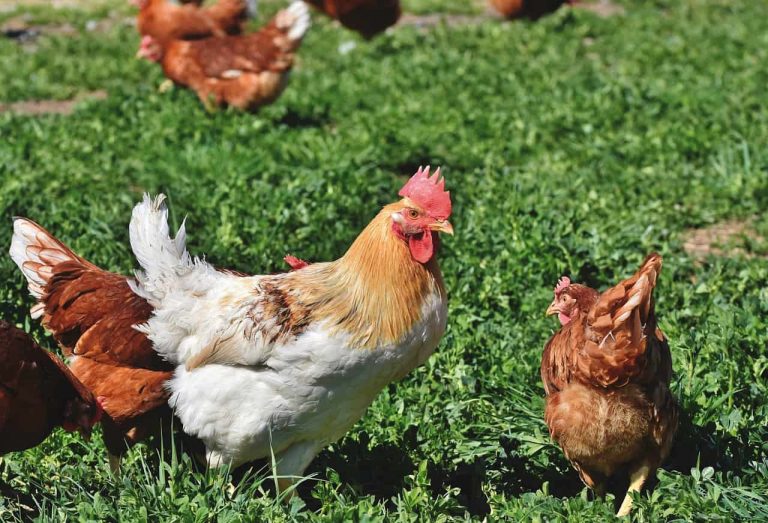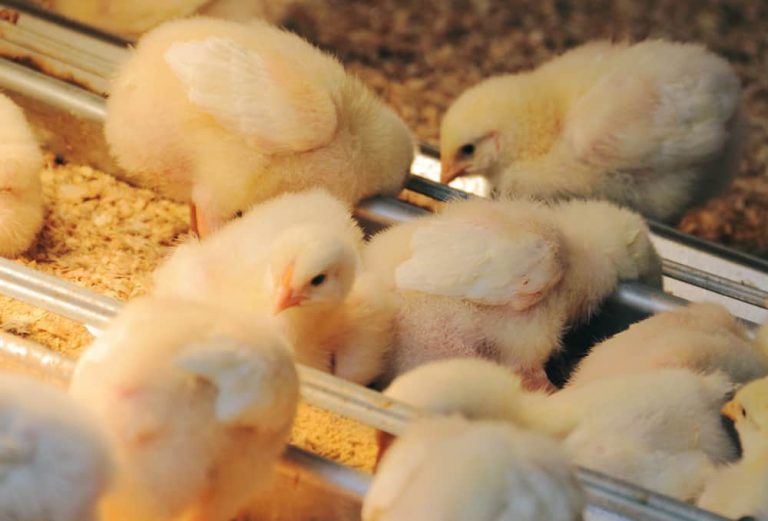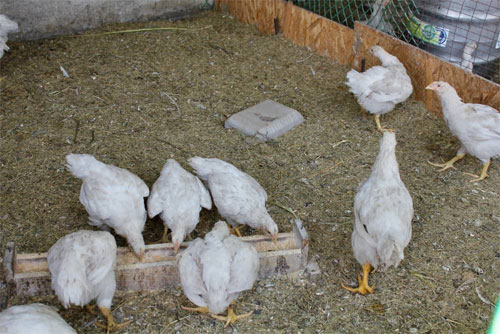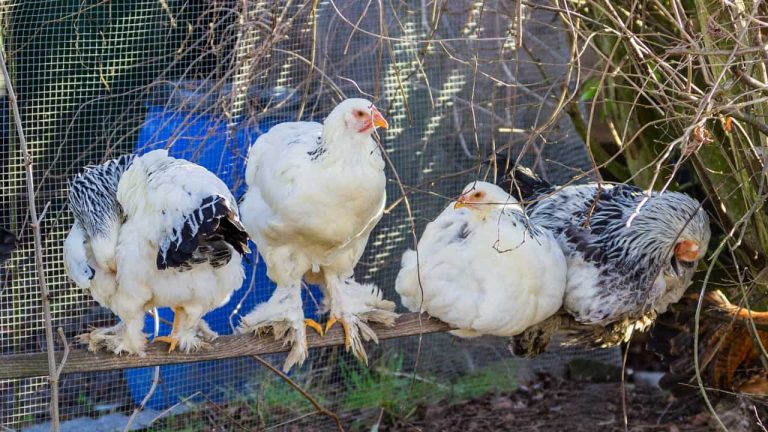Once you have set up your chicken coop and your chicken run, you might be wondering what type of bedding materials are the most recommended ones. Luckily for you, we have done a lot of research on this particular topic.
In this post, we’re looking at the best chicken coop bedding. For each type, we’ll present both their advantages and their disadvantages. We’ll also include some information on chicken coop floor materials and their pros and cons, too.
Contents
Chicken coop bedding
1. Wood shavings
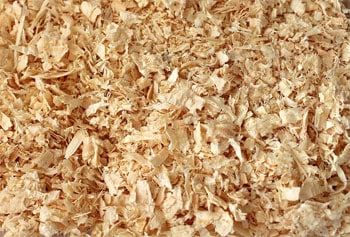
Wood shavings can be a good option for most farmers as they can absorb moisture and bad smells in a timely fashion, and they’re also easy to remove. They are also suitable for the deep litter method that many farmers and gardeners tend to use.
Pine shavings are generally acknowledged as ‘clean’ since you can easily get rid of them by using a garden fork. They are readily available and affordable, so they make the best economical choice for chicken growers.
One note that we have to make is that they shouldn’t be derived from hardwoods since the latter are known to be more exposed to mold development. Dusty wood shavings are a no-go as they can cause breathing problems in both young and adult chickens.
A good example of such bedding that you might want to use is the Manna Pro 100316 Pine Shavings Bedding for Chickens as it’s eco-friendly, sustainable, highly absorbent, and it controls nasty odors in the coop.
2. Straw
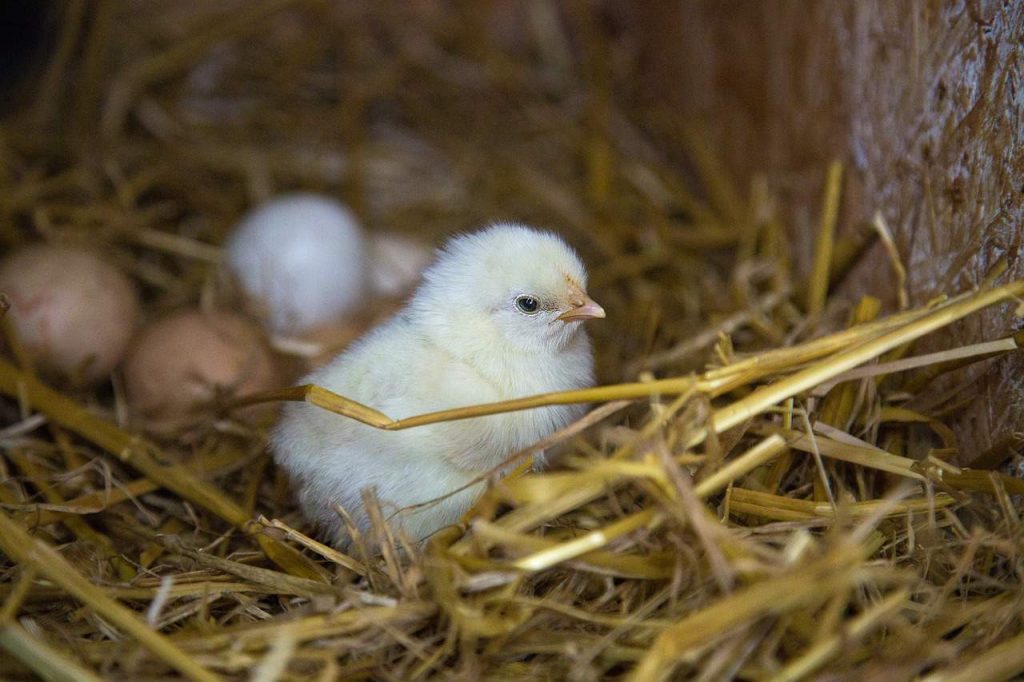
Straw has its fair share of advantages and disadvantages. Some of its benefits consist of being rather cheap and warm. Straw acts similarly to an insulator, so it is a good choice for the colder months.
Unfortunately, you need to replace it more often than other types of bedding. If you do not, you’ll notice that it develops bad smells. As if these two drawbacks weren’t enough, straw can also be potentially dangerous since some types might contain pesticide residue.
The Thunder Acres 100 Percent Natural Wheat Straw can make an excellent bedding option for the cold season, especially since it’s safe, biodegradable, and eco-friendly.
3. Shredded paper
If you tend to shred a lot of documents or newspapers, you can always use the material as bedding for your backyard birds. Paper makes a good bedding choice during the winter since it has good insulating capabilities.
The downside is that you will have to do your best at changing it as often as possible, and sometimes, as often as every three days or so. It tends to get soiled fast.
Don’t leave it to get too wet as it can be the perfect breeding environment for bacteria that are present in the chicken droppings. A commercially available product that we recommend is the Small Pet Select Natural Paper Bedding as it’s soft, comfortable, and completely natural.
4. Sand
This is another bedding that you might want to try, especially if you do not want to replace it as often as you’d have to when using a straw, for example.
You can merely use a rake to get rid of the clumps that have formed in the areas where the chickens have left their droppings and leave the rest of the sand to do its job.
One notable advantage of sand bedding is that it is easy to find. While it might not be as cheap as other options, you do have to consider that the chickens themselves will love it, especially since they appreciate a dust bath every once in a while.
5. Grass clippings
If you have nothing against changing the chicken coop bedding once every couple of days, you can use your grass clippings for the purpose. However, the grass should be a little older. You can leave the clippings out in the sun to dry and turn them into a sort of ‘hay’.
The advantage of this bedding is that it costs nothing, especially if you have a bigger property and you tend to use your lawnmower every few days.
6. Dried leaves
This is an economical type of bedding that you can use during the fall months. It offers fair moisture control, but it’s not the best option currently available, even though it does tend to dry up fast. It gets dirty quickly and it can smell bad, too.
7. Hay
Hay can be a reasonable bedding choice for nesting boxes only, and that’s because it tends to get soiled fast, so it needs to be replaced quite often.
Since you have to do that anyway with nesting boxes and the bedding you use with young chicks, hay does make a sensible option in this sense. It also has a tendency to get smelly, so it’s not recommended for the summer when ammonia levels inside a coop can get dangerous.
Grandpa’s Best Timothy Hay Mini Bale can be an alternative you might want to check out if you’re interested in trying hay bedding.
8. Hemp bedding
The most significant benefit of this type of chicken coop bedding is its absorbency. You don’t have to change it often as it doesn’t retain the moisture of the droppings, which means that cleaning is not a task that you will dread.
On top of that, it’s less acidic than other bedding options, and it regulates odors, so your coop isn’t going to stink. You’re free to use the deep litter method with this one as it makes for great compost.
The Rural365 Chicken Hemp Bedding Industrial Hemp Bale is a product that you might want to consider if you’re just starting out with this type of coop bedding. It’s soft, comfortable, and it acts as an insulator, so it can be used during the colder months, too.
9. Excelsior fiber
This type of bedding comes in the form of fiber pads that are specifically designed to fit nesting boxes. It’s derived from wood and it goes by the name of ‘wood wool’.
On the upside, working with Excelsior fiber is very easy as all you have to do is replace the pads when you notice that they’re getting dirty. On the other hand, they can be quite expensive if you don’t use any alternative bedding that’s cheaper, such as straw, for example.
10. Sawdust
If you’re a rookie when it comes to farming chickens, you might be tempted to try sawdust for your coop bedding. Well, think again.
Seasoned farmers know that this material makes one of the worst options of all, and that’s because it has a powdery nature and it can cause a variety of respiratory issues. It’s not even that absorbent, either, so it’s not worth the risk, even if it is fairly cheap.
Nesting material
The most common materials used for nesting boxes are hay, straw, wood shavings, and shredded paper or newspaper. Out of all, wood shavings are not recommended for hatching chicks, as the latter might think that the shavings are food.
While hay isn’t the best chicken coop bedding, it is great for nesting. It’s soft and warm, but it does tend to rot fast, and it can also represent the perfect spreading environment for chicken mites.
Straw is the best nesting material and the one that we recommend. If you change it often, it can provide your birds with comfort and warmth.
These days, you can find commercial nest box pads such as the Cackle Hatchery Laying Hen ones, which are thick and absorbent, as well as easy to remove and replace.
Bedding for poultry chicks
Sawdust is the worst bedding material for young chicks, so we would recommend against utilizing it. They can mistake it for food and eat it, and they can end up suffering from a variety of health issues.
Wood shavings, grass clippings, and even leaves make the best bedding for poultry chicks. One thing that we have to note here is that you should do your best at completely removing it as often as possible, especially since young chicks can get sick if you don’t.
Never leave the bedding to become wet from the droppings as that is a clear sign that your chickens might develop health issues every day now.
A safe type of bedding for young chicks would be the Standlee Hay Company Wheat or Barley Chopped Straw as it is all-natural and biodegradable and it absorbs the droppings effectively and conveniently.
Deep litter method
With this method, you will be able to create compost for your vegetable patches or flower garden. While some folks might find it a little disgusting, the truth is that it is quite effective.
What you have to do is to add a layer of compostable bedding (anything ranging from straw to wood shavings), let the chickens soil it for a number of days (up to 14 days, depending on how many birds you own), and then add another layer of bedding. Repeat the process.
You can perform this procedure for as many as three to four months, but most farmers agree that completely removing the bedding (along with the chicken poop contained in it) should be done around the 2-month mark for safety reasons.
We found that the Small Pet Select Pine Shavings Chicken Bedding is a good option in this sense, as it’s compostable, dust-free, and triple screened.
What can you use for the chicken run?
Some farmers like to use bedding in the run, although it’s not exactly necessary. A mix of materials is the best choice, in this case, since there is no real winner.
You can mix anything from wood shavings to grass clippings and dried leaves, but you shouldn’t use the same thick layer that you’d add to the chicken coop floor. One inch is usually enough.
Types of coop floors
If you haven’t finished building your chicken coop and you’re mulling over the types of flooring you have at your disposal, here are some of the most commonly utilized ones nowadays:
- Rubber mats
Rubber mats are very easy to clean and maintain as all you have to do is to take them off the floor and give them a good hose-down. They aren’t slippery, either, so you don’t have to worry about your chickens injuring themselves.
On the other hand, they can cost a pretty penny, especially when compared to the other floor options in this list.
- Plywood
Plywood has a number of advantages that are undeniable. It is affordable, easy to find, easy to clean and disinfect, and it keeps rodents and predators out of your coop.
Like wooden boards, it can rot over time, so it is not a winner when it comes to durability. Plus, with this choice, you absolutely must use chicken coop bedding. Otherwise, you will have to clean it day in and day out.
- Wooden boards
This is a budget-friendly option that is easy to install by pretty much any farmer, regardless of their experience. If you don’t set the boards properly, however, there could be predators that might get into the coop and attack your chickens.
On top of that, wood is not the most durable material ever, and it can rot as time goes by. But since it is readily available, you can always replace it.
- Concrete
Concrete takes the cake when it comes to durability and it is also easy to clean and maintain. Your birds are also going to be protected from predators with this option as they have no way of burrowing and getting into the coop.
Unfortunately, concrete can get quite cool during the winter, it costs more than other options, and it makes it nearly impossible for you to move the coop from one place to another. You can use a chicken coop heater as an alternative to warm the concrete floor and the coop.
- Vinyl and linoleum
This type of floor material is easy to clean and maintain, but you might have a hard time finding a durable alternative. Good-quality linoleum and vinyl can be expensive, and the most concerning aspect is that vinyl can be toxic if it is not treated properly.
Many manufacturers advertise their vinyl flooring as being linoleum without taking into account that it can kill chickens.
- Wire
Wire floors also make it difficult for predators to get to your chickens. Moreover, this flooring has the advantage of keeping the coop well-ventilated, especially if it is raised. You do have to add a good layer of bedding, however, so that the chickens don’t hurt their feet.
Some types of wire can be challenging to clean and disinfect, and they may let cold air get into the coop during the winter months.
Frequently asked questions about chicken coop bedding
1. Why should you use chicken coop bedding?
Using bedding in the chicken coop is important as it keeps the birds feeling comfortable and at ease, and it also prevents bacterial and parasite buildup. If you add more layers or you completely remove the material, you will effectively keep your birds’ health in check.
Moreover, some types of bedding materials can keep chickens’ feet warm, especially during the winter. Backyard birds don’t like living in cold environments.
2. How often should you change chicken coop bedding?
It depends on the material that you use, but also the number of chickens that you own and whether or not the bedding is affected by any environmental factors. With some materials, such as pine shavings, for example, you might find that you fully have to replace the bedding as rarely as 3 to 4 months. Sand is even more convenient as it quickly dries up and all you have to do is to rake it every once in a while. Fully replacing it can be done every six months or so.
The deep litter method involves you adding extra layers of bedding to those that already exist in the coop. The one that has formed you’d have to completely replace every five to six months, too, and the best thing about it is that you can use it as compost in your garden.
3. How much bedding does a chicken coop need?
Most farmers agree that the depth of the layer of any bedding, but wood shavings, in particular, should be at least three to four inches. If you use more and the layer gets to a depth of six or even seven inches, your birds will feel even more comfortable.
Plus, you might find that you don’t have to replace it as often.


